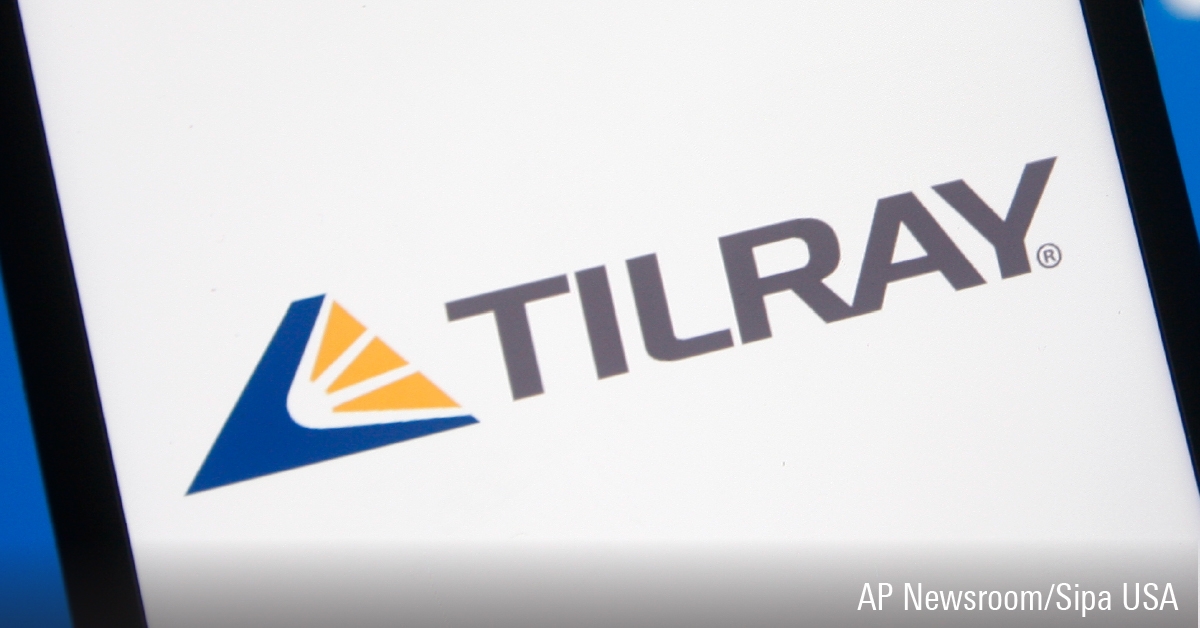
Editor's note: Read the latest on how the coronavirus is rattling the markets and what you can do to navigate it.
For long people and businesses were hesitant to incorporate video into their daily work lives. The ongoing coronavirus pandemic is fast changing that. The widespread use of videoconferencing for working from home, socializing and distance learning has taken the awkwardness and skepticism out of video-based transactions. Some argue that when the pandemic storm blows over, things will not be the same again. The emergence of the digital-driven new normal would see a world that is more than ready for the use of video-based apps. Increasingly, in-person visits will be supplanted by virtual meetings facilitating faster decision making and eliminating travel time and associated costs.
The growing use of videoconferencing is strengthening the case for a chat and collaborative software as effective tools for remote working and business continuity. The global videoconferencing market size, valued at US$3.85 billion in 2019, is expected to grow at 9.9% annually from 2020 to 2027. By another account, the market could skyrocket to US$43 billion as early as 2022. Rapid technological innovations such as facial recognition, 5G, better online security, virtual reality, and cloud-based solutions should fuel greater adoption of these applications.
This creates a long-term tailwind of growth for companies at the forefront of videoconferencing technology. The following players are well-positioned to benefit as more companies and institutions conduct virtual meetings to stay connected, collaborate and carry out commercial activities during the pandemic. Moreover, these videoconferencing service providers may continue to enjoy windfall profits as businesses continue to crimp costs by using virtual applications long after the coronavirus commotion has subsided.
| Zoom Video Communications Inc. | |||
| Ticker: | ZM | ||
| Current yield: | - | ||
| Forward P/E: | 384.62 | ||
| Price: | US $166.46 | ||
| Fair value: | US $62 | ||
| Value: | 156% Premium | ||
| Moat: | None | ||
| Moat trend: | Stable | ||
| Star rating: | * | ||
|
A leader in the videoconferencing market, Zoom (ZM) provides software that connects people through video, voice, chat, and content sharing. The company’s cloud platform enables face-to-face video and connects users across various devices and locations in a single meeting.
The company’s brand recognition skyrocketed since the outbreak of the pandemic as the world scrambled to find virtual solutions to keep functioning despite stay-at-home orders. “The company offers a differentiated peer-to-peer technology, complete with proprietary routing technology,” says a Morningstar equity report, referring to Zoom as a leader in meeting software that is disrupting and expanding the videoconferencing market with its ease of use and superior user experience.
While the broader market continues to bleed red, shares of Zoom have more than doubled in value since January. “We continue to see a long runway for growth as the company gains traction with its Zoom Phones solutions, and we are impressed with management’s ability to drive strong revenue performance while simultaneously delivering operating leverage,” says Morningstar equity analyst, Dan Romanoff, but cautions “shares have run ahead of levels that fundamentals can support.”
Zoom’s user base has exploded from 10 million in December to 200 million in March. “The company’s funnel is increasing, as so many users are having a trial by fire on Zoom’s video calling application,” says Romanoff, who pegs the stock’s fair value at US$62.
| Slack Technologies Inc Class A | |
| Ticker: | WORK |
| Current yield: | - |
| Forward P/E: | - |
| Price: | $27.47 |
| Fair value: | $20 |
| Value: | 30% Premium |
| Moat: | None |
| Moat trend: | Positive |
| Star rating: | ** |
| Data as of April 27, 2020 | |
The team collaboration platform, Slack Technologies (WORK) brings together people, applications, and data. The platform, built for all business types and sizes, offers chat, file sharing, video calls, and more.
“Given tired legacy products, industry buzz, and the rapid market uptake of Slack thus far, we have little doubt that revenue will continue to grow rapidly over the next several years,” says a Morningstar equity report, adding that Slack is “the next step in an ongoing evolution of collaboration software.”
The company shares are up more than 18% since January, as of April 23, due to faster uptake spurred by social distancing and work-from-home mandates. Slack offers tiered services, a “freemium” model, which starting with free basic, but more features are unlocked at various levels of pricing ranging from US$6.67 to US$12.50, topping out at Enterprise Grid. “Slack’s conversion rate has been impressive at 30%-35% [compared to 5% for typical freemium models], says Romanoff, who puts the stock’s fair value at US$20, and forecasts a 30% annual revenue growth through 2025.
The company reported a fourth-quarter revenue jump of 49% year over year to US$181.9 million. “Slack’s focus on driving growth through enterprise customers is paying off, as 17 customers with over US$1 million each in annually recurring revenue were added in the quarter, bringing the total to 70,” notes Romanoff.
| Microsoft Corp | |
| Ticker: | MSFT |
| Current yield: | 1.17% |
| Forward P/E: | 28.01 |
| Price: | $174.16 |
| Fair value: | $185.00 |
| Value: | Fairly Valued |
| Moat: | Wide |
| Moat trend: | Stable |
| Star rating: | *** |
| Data as of April 27, 2020 | |
Tech behemoth Microsoft (MSFT) is best known for its Windows operating systems and Office suite. Apart from productivity and business processes, the company has a formidable and growing presence in intelligence cloud and personal computing.
Since the outbreak of Covid-19, the firm’s group chat, voice and video calls and collaboration software, packaged as Microsoft Teams, has become a serious player in the remote working space. Microsoft has seen a whopping 500% jump in Teams meetings, calls and conferences in China and a 200% increase in Teams usage on mobile devices, since January 31.
The recent sell-off triggered by concerns over Covid-19 and oil production has created “an opportunity for investors to trade up into several high-quality stocks,” including wide-moat Microsoft, says a Morningstar equity report, adding that “we do not think these new concerns warrant the sell-off that we have witnessed” in wide-moat names.
Microsoft has emerged as a cloud leader under the leadership of CEO Satya Nadella. “Additionally, Microsoft has accelerated the transition from a traditional perpetual license model to a subscription model,” says Romanoff. The company exited the low-growth, low-margin mobile handset business, and pursued cloud-based gaming, “factors [that] have combined to drive a more focused company that offers impressive revenue growth with high and expanding margins,” says Romanoff, who appraises the stock to be worth US$185, supported by its US$7 billion cloud computing platform Azure.
| RingCentral Inc Class A | |
| Ticker: | RNG |
| Current yield: | - |
| Forward P/E: | 263.16 |
| Price: | $244.40 |
| Fair value: | $301 |
| Value: | 21% discount |
| Moat: | Narrow |
| Moat trend: | Stable |
| Star rating: | **** |
| Data as of April 27, 2020 | |
A unified-communication-as-a-service (UCaaS) provider, RingCentral (RNG) offers cloud-based phone, video, and messaging services. The company’s software provides an easy-to-use, integrated communication application that offer multiple tools for businesses to communicate and collaborate all in one place.
Nearly 90% of the company’s revenue comes from its flagship RingCentral Office application, which lets users communicate and collaborate using an array of applications including voice, video, messaging, and conferencing. “RingCentral’s UCaaS offering plays a critical role in the daily workflow of employees that will allow it to earn excess returns for the next decade,” says a Morningstar equity report, noting that “in the wake of the pandemic, RingCentral could be a key beneficiary of the recent work from home trend in the medium to long term as adoption of UCaaS solutions is likely to accelerate more than we had previously anticipated.”
The firm benefits from several trends including the rise in need for worker mobility, remote working, and greater stress on business continuity and disaster planning. “In addition to the mobility benefits, we expect that technology chiefs will be motivated to move to UCaaS solutions and focus the efforts of their IT staff on more pressing and higher ROI technology projects than telephony,” says Morningstar equity analyst, John Barrett, who recently raised the stock’s fair value from US$262 to US$301, prompted by the faster adoption of UCaaS solutions.
Capture opportunities in communications technology
Learn about the Morningstar Exponential Technologies Index here








.jpg)













